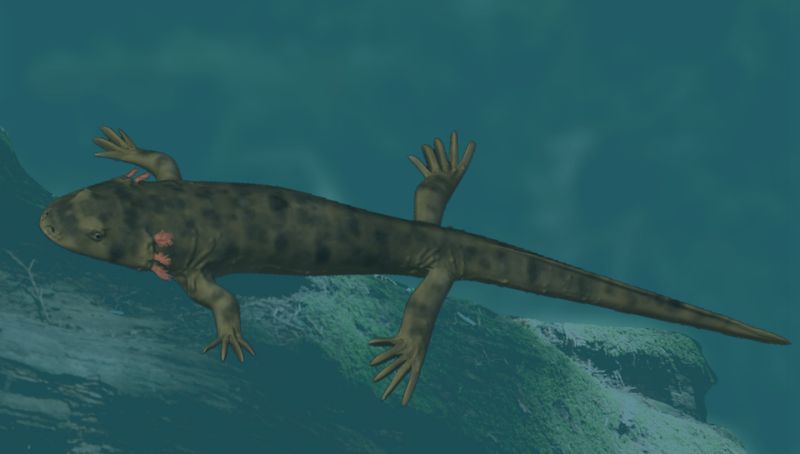|
2013 In Paleobotany
This list of 2013 in paleobotany records new fossil plant taxa that were binomial nomenclature, described during 2013, as well as other significant discoveries and events related to paleobotany that occurred in the year. Chlorophyta Moss, Bryophyta Ferns and fern allies Ginkgophytes Gnetophyta Pachytestopsida Pinophyta Angiosperms Other seed plants Other plants References {{Reflist, 30em 2013 in paleontology Paleobotany 2013 in science ... [...More Info...] [...Related Items...] OR: [Wikipedia] [Google] [Baidu] |
Brachytheciaceae
Brachytheciaceae is a family of mosses from the order Hypnales. The family includes over 40 genera and 250 species. Description The family consists of pleurocarpous mosses with very diverse appearances. They are irregular or pinnately branched and form loose mats. The leaves are broad ovate or triangular and are sharply focused at the top. A midrib is always present and usually reaches more than half of the leaf. The leaf cells are prosenchymatous and are many times longer than wide and interlocking with pointed ends. The sporophyte consists of a regularly formed spore capsule that stands straight on the setae. The spores are distributed through an annular peristome, which is closed off by a beak-shaped operculum in immature plants. Habitat Species are terrestrial, epiphytic, or lithophytic plants that are distributed around the world. They grow on various substrates, including rock, bark, and soil. Taxonomy Brachytheciaceae is in the order Hypnales. They are a sister group ... [...More Info...] [...Related Items...] OR: [Wikipedia] [Google] [Baidu] |
Osmundaceae
Osmundaceae (royal fern family) is a family of ferns containing four to six extant genera and 18–25 known species. It is the only living family of the order Osmundales in the class Polypodiopsida (ferns) or in some classifications the only order in the class Osmundopsida. This is an ancient (known from the Upper Permian) and fairly isolated group that is often known as the "flowering ferns" because of the striking aspect of the ripe sporangia in ''Claytosmunda'', ''Osmunda'', ''Osmundastrum'', and ''Plensium'' (subtribe Osmundinae). In these genera the sporangia are borne naked on non-laminar pinnules, while ''Todea'' and ''Leptopteris'' (subtribe Todinae) bear sporangia naked on laminar pinnules. Ferns in this family are larger than most other ferns. Description The stems of Osmundaceae contain vascular tissue arranged as an ectophloic siphonostele; that is, a ring of phloem occurs on the outside only of a ring of xylem, which surrounds pith (and no other vascular tissue). ... [...More Info...] [...Related Items...] OR: [Wikipedia] [Google] [Baidu] |
Tiaojishan Formation
The Tiaojishan Formation is a geological formation in Hebei and Liaoning, People's Republic of China, dating to the middle-late Jurassic period (Bathonian- Oxfordian stages). It is known for its exceptionally preserved fossils, including those of plants, insects and vertebrates. It is made up mainly of pyroclastic rock interspersed with basic volcanic and sedimentary rocks. Previously, the Tiaojishan Formation was grouped together with the underlying Haifanggou Formation (also known as the Jiulongshan Formation) as a single "Lanqi Formation." The Tiaojishan Formation forms a key part of the Yanliao Biota assemblage, alongside the Haifanggou Formation. Age Using Argon–argon dating, Wang and colleagues in 2005 dated part of the Tiaojishan Formation to about 160 million years ago, the beginning of the Oxfordian stage, the first stage of the Upper Jurassic epoch. In 2006, a study by Liu and colleagues used U-Pb zircon dating to conclude that the Tiaojishan Formation correlates ... [...More Info...] [...Related Items...] OR: [Wikipedia] [Google] [Baidu] |
Hypnales
Hypnales is the botanical name of an order of Bryophyta or leafy mosses. This group is sometimes called feather mosses, referring to their freely branched stems. The order includes more than 40 families and more than 4,000 species, making them the largest order of mosses. Description Hypnales are mosses with pinnately or irregularly branched, reclining stems, with varying appearances. The stem contains only a reduced central vascular bundle, which is seen as a recent derived trait in mosses. The stems are covered with paraphyllia or pseudoparaphyllia, reduced filamentous or scaly leaves. The ordinary stem leaves are ovate to lanceolate, often with leaf wing cells. The midvein is often limited to the lower half of the leaf blade, or has completely disappeared. The cells of the leaf blade are prosenchymatic, many times longer than wide, with pointed ends interlocking. The sporophyte consists of a regularly shaped sporangium on a long stalk or seta. The spores are distribut ... [...More Info...] [...Related Items...] OR: [Wikipedia] [Google] [Baidu] |
Dicranales
Dicranales is an order of haplolepideous mosses in the subclass Dicranidae The Dicranidae are a widespread and diverse subclass of mosses in class Bryopsida, with many species of dry or disturbed areas. They are distinguished by their spores; the peristome Peristome (from the Greek ''peri'', meaning 'around' or 'about', .... References External links McGrawHill, Dicranales Moss orders {{Bryophyte-stub ... [...More Info...] [...Related Items...] OR: [Wikipedia] [Google] [Baidu] |
Late Jurassic
The Late Jurassic is the third epoch of the Jurassic Period, and it spans the geologic time from 163.5 ± 1.0 to 145.0 ± 0.8 million years ago (Ma), which is preserved in Upper Jurassic strata.Owen 1987. In European lithostratigraphy, the name "Malm" indicates rocks of Late Jurassic age. In the past, ''Malm'' was also used to indicate the unit of geological time, but this usage is now discouraged to make a clear distinction between lithostratigraphic and geochronologic/chronostratigraphic units. Subdivisions The Late Jurassic is divided into three ages, which correspond with the three (faunal) stages of Upper Jurassic rock: Paleogeography During the Late Jurassic Epoch, Pangaea broke up into two supercontinents, Laurasia to the north, and Gondwana to the south. The result of this break-up was the spawning of the Atlantic Ocean. However, at this time, the Atlantic Ocean was relatively narrow. Life forms of the epoch This epoch is well known for many famous types of din ... [...More Info...] [...Related Items...] OR: [Wikipedia] [Google] [Baidu] |
